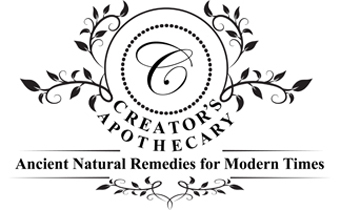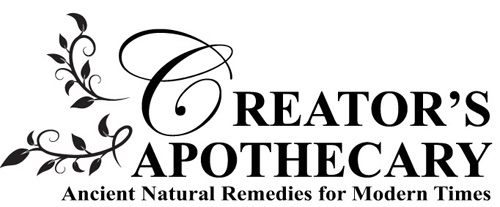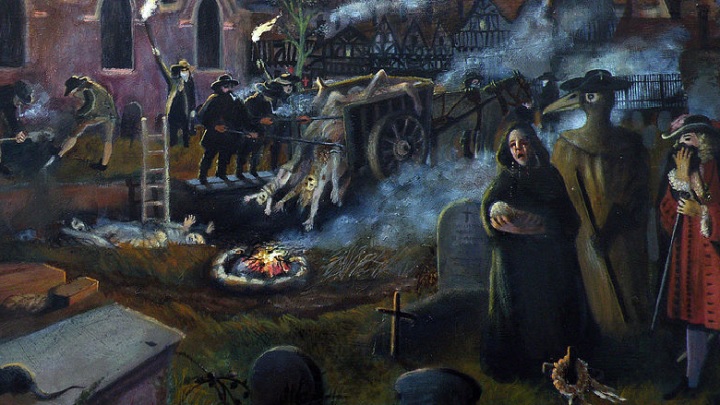Legend of the Four Thieves’ Immunity to the Black Plague
The Black Plague, also known as the Bubonic Plague, was a period of turmoil, hopelessness, devastation, and death with thousands upon thousands of people dying. The plague swept repeatedly through the worl1d and the final devastating infection was in the 1700s. The Black Plague was no respecter of persons and ended the lives of young, old, rich, and poor alike. Terror and dread hung over the cities like looming, black storm clouds and, terror-filled, the people dared not venture outside their homes, locking themselves securely inside. Daniel Defoe, author, looking backward describes the gruesome fate of Londoners in his 18th century account of the catastrophic event in “A Journal of the Plague Year.”
“The plague, as I suppose all distempers do, operated in a different manner on differing constitutions; some were immediately overwhelmed with it, and it came to violent fevers, vomitings, insufferable headaches, pains in the back, and so up to ravings and ragings with those pains,” Defoe wrote.” Others with swellings and tumours in the neck or groin, or armpits, which till they could be broke put them into insufferable agonies and torment; while others, as I have observed, were silently infected.”
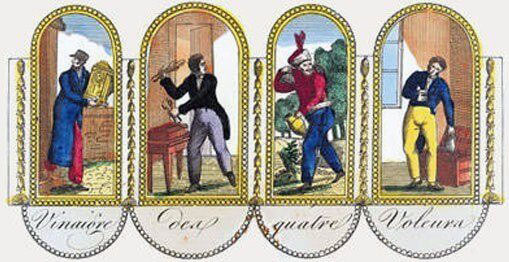
The backdrop for this much-discussed and popular Legend of The Four Thieves Anti-Plague Herbal Blend is Marseilles, France during the 1600s. One account says the Royal English Archives records that the thieves were a family of perfumers whose parents were herbalists. Another account says they were a low-income family of four brothers, yet another account says they were spice traders, and a fourth names them as gravediggers. For the legendary tale to make sense, the thieves would have to have some knowledge of herbs, vinegars, and the powerful properties of oils, or to be very darn lucky!
On with the tale, at the height of the Black Plague purportedly these four thieves were routinely robbing graves, plague victims near death, and killing others dying without contracting the plague themselves. As everyone around them was dropping like flies [or maybe I should say infected-fleas], one must ask, “how was it possible that they could touch Black Plague corpses and dying victims and never become ill?”
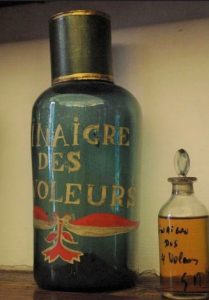
Apparently, the thieves would liberally coat their bodies (or maybe just their hands, face, ears, and temples) with an herbal vinegar concoction. Other sources say they soaked a cloth in the vinegar and wrapped it over their noses to prevent the “pestilence” from entering their bodies. Some say that recipe for the Four Thieves Vinegar originated with the four thieves, while others claim that a man named Richard Forthave developed and sold the preparation, and that the ‘medicine’ was originally referred to as Forthave’s, and later corrupted to be Four Thieves.”
In his book, “The Practice of Aromatherapy,” famous French aromatherapy doctor, Jean Valnet (1920-1995), states the corpse robbers revealed the original recipe when they were caught red-handed around Toulouse in 1628-1631. Valnet further writes, “The archives of the Parliament of Toulouse record that: “During the great plague, four robbers were convicted of going to the houses of plague-victims, strangling them in their beds and then looting their dwellings: for this they were condemned to be burned at the stake, and in order to have the sentence mitigated they revealed their secret preservative; after which they were hanged.”
Many sources suggest the ingredients of the “Four Thieves Vinegar” was a combination pf the following herbs in a suspension of vinegar and garlic:
- Lavender
- Rosemary
- Camphor
- Sage
- Cinnamon
However, Valnet’s Four Thieves Vinegar recipe has three of the same ingredients along with added ingredients, and does not contain lavender and cinnamon bark:
- 3 pints of strong white wine vinegar
- a handful each of wormwood, meadowsweet, juniper berries, wild marjoram and Sage
- 50 cloves
- 2 ounces of elecampane root (elecampane is also called horse-heal or elfdock, is a widespread plant species in the sunflower family Asteraceae)
- 2 ounces of angelica
- 2 ounces of rosemary
- 2 ounces of horehound
- 3 g camphor
From Vinegar to Essential Oil
The various recipes for the thieves vinegar blend have been around since the 1600s. How and when did it get transformed from a vinegar remedy to an essential oil blend? In 1966, Gary Young, founder of Young Living and student of Dr. Valnet, created an oil blend that was intended to help protect people from harmful microbes and aid immune system strength. Young first published explanations of Thieves Oil was in his 1996 book, “Aromatherapy: The Essential Beginning.” Some ingredients are found in both the vinegar recipes and typical thieves recipes.
Traditionally, “thieves’ oil” is a blend of five essential oils:
1. Clove (distillation of the leaves of Syzygium aromaticum)
2. Cinnamon Bark (from Cinnamon zeylanicum trees)
3. Eucalyptus instead of camphor (distillation from the dried leaves of Eucalyptus globulus some say radiata)
4. Lemon
5. Rosemary (aerial parts of the Rosmarinus officinalis)
Wikipedia states, “This specific vinegar composition is said to have been used during Black Death epidemic of the medieval period, to prevent the catching of the plague. Similar herbal vinegars have been used as medicine since the time of Hippocrates.”
Early recipes for this vinegar called for a number of herbs to be added into a vinegar solution and left to steep for several days. The following vinegar recipe hung in the Museum of Paris in 1937, and is said to have been an original copy of the recipe posted on the walls of Marseilles during an episode of the plague:
Take three pints of strong white wine vinegar, add a handful of each of wormwood, meadowsweet, wild marjoram and sage, fifty cloves, two ounces of campanula roots, two ounces of angelic, rosemary and horehound and three large measures of camphor. Place the mixture in a container for fifteen days, strain and express then bottle. Use by rubbing it on the hands, ears and temples from time to time when approaching a plague victim.
And now we know how this essential oil blend got its name. I found it to be a very weird name for an oil blend the first time I heard it, and was completely unaware of its microbial abilities antimicrobial capability of destroying or inhibiting the growth of microbes. Some of the properties of the oils that are responsible for the effectiveness of Thieves Essential oil blend include:
- Clove Bud (Eugenia caryophyllata) – antibacterial, antifungal, strong antiseptic, antitumoral, antiviral, anti-inflammatory, disinfectant, antiparisitic, anti-infectious and an immune stimulant
- Cinnamon Bark (Cinnamon zeylanicum) – antimicrobial, antibacterial, anti-infectious, anti-inflamatory, antiparasitic, antiseptic, antiviral, purifier, immune-stimulant
- Eucalyptus (Eucalyptus radiata) – antibacterial, anti-infectious, antiviral, anti-inflammatory, anticatarrhal and expectorant
- Lemon (Citrus limon) – antiseptic, anticancer, antifungal, antiviral, antioxidant
- Rosemary (Rosmarinus officinalis) – antimicrobial, anti-inflammatory, antioxidant, antibacterial, immune booster
Grace to you and peace from God our Father and the Lord Jesus Christ. Philippians 1:2
Til next time,

References
https://discover.hubpages.com/education/The-Plague-a-liitle-story-of-essential-oil-power
https://nexonbotanics.com/blogs/tips-benefits/keeping-with-tradition-the-legend-of-four-thieves-and-their-use-of-essential-oils-during-the-black-plague
https://guardianlv.com/2014/05/black-death-skeletons-talk-and-thieves-survived/
https://guardianlv.com/2014/05/black-death-skeletons-talk-and-thieves-survived/
https://hsionline.com/2019/05/08/could-this-black-death-cure-be-the-key-to-conquering-cancer/
